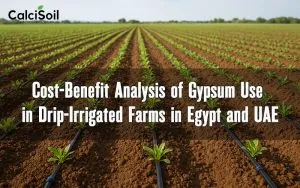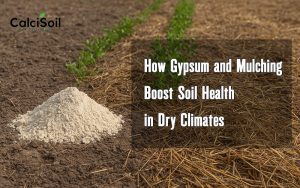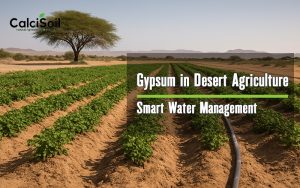
Soil permeability is the ability of soil to transmit water and air. It is an important property to consider for various applications, such as fish culture, engineering structures, and construction. Permeability is typically represented by the coefficient of permeability (k). which measures the rate of water flow per unit area of soil under a unit hydraulic gradient. It is influenced by factors such as porosity, the shape of pores, and soil layering. Permeability can be measured in the laboratory or in the field using specific testing methods.
Soil permeability is an essential factor in agriculture. as it affects the supply of root-zone air, moisture, and nutrients available for plant uptake. It refers to the movement of air and water through the soil. which is crucial for various agricultural processes and the overall health of the soil. Some key aspects of soil permeability in agriculture include:
Root-zone air supply. Soil permeability influences the supply of air to the root zone, which is essential for plant growth and respiration.
Moisture and nutrient availability. Soil permeability affects the movement of water and nutrients through the soil. which can impact the availability of these resources for plant uptake.
Infiltration and drainage. Soil permeability plays a significant role in regulating infiltration, drainage, and water storage in the soil.
Soil structure and texture. The structure and texture of soil can greatly modify its permeability rates, with finer soil textures generally having slower permeability.
Factors affecting soil permeability. Soil voids, hydraulic gradient, soil type, texture, and particle size distribution can all influence soil permeability.
In summary, soil permeability is a crucial factor in agriculture. as it affects supply of air, moisture, and nutrients to plants, as well as overall health and productivity of soil. Understanding and managing soil permeability can help improve agricultural practices and ensure the long-term sustainability of agricultural systems.
Improving Soil permeability ways
To improve soil permeability, several methods can be employed, including:
Adding Organic Matter. Aged manure or compost can be added to the soil to improve permeability. This helps create a wider variety of soil particle sizes and spaces, allowing for healthier growth and better drainage.
Soil Structure Management. Practices such as vertical tillage, active carbon, and calcium application can help improve soil structure. and allowing for better water infiltration and percolation.
Avoiding Overwatering. Overwatering can lead to soil compaction, which in turn can reduce permeability. Proper water management is essential for maintaining good soil permeability.
Soil Texture and Pore Size Management. Soil texture, pore size, and structure significantly influence soil permeability. Finer soil textures generally have slower permeability, so managing soil texture can help improve permeability.
Leaching Management. Sometimes, soil permeability can be increased by the surface application of slowly soluble substances to enhance leaching with low-salinity water.
These methods can help improve soil permeability. which is crucial for water and air movement through soil, as well as for the supply of nutrients to plants.
Gypsum for Soil permeability
About the gypsum effect on soil permeability we should notice that Gypsum improves soil structure. and it can increase soil permeability to water, making it easier for water to penetrate and percolate through the soil. It does not increase or decrease soil acidity, but it adds calcium and sulfate ions to the soil. which can displace aluminum and improve root growth.
Gypsum is most beneficial to soils where excess sodium is present. as it can displace sodium and allow it to be leached deeper into the soil. However, if the concentration of calcium in the soil is already high, gypsum may have little or no effect. Routine rates of gypsum application may not immediately improve soil structure. but over time, it can create and support good soil structure, which means more water for the plants.
Soil permeability measuring techniques

Several techniques are used to measure soil permeability, including laboratory and field methods. Some of the common techniques are:
Laboratory Tests.
Constant Head Permeability Test: This test is used to determine the permeability coefficient of soil. It involves measuring the rate of flow of water through a soil specimen under a constant head.
Falling Head Permeability Test: This test is also used to determine the permeability coefficient of soil. It involves measuring the rate of flow of water through a soil specimen under a falling head.
Field Tests.
Visual Evaluation: The permeability of individual soil horizons may be evaluated by visually studying particular soil characteristics in the field.
In-situ Permeability Test: A method involving the insertion of a tube into the soil to the desired depth. below the water table, with minimum soil disturbance, yielding statistically significant results.
These methods are used to determine the rate at which water moves through soil. which is essential for various engineering and environmental applications.







